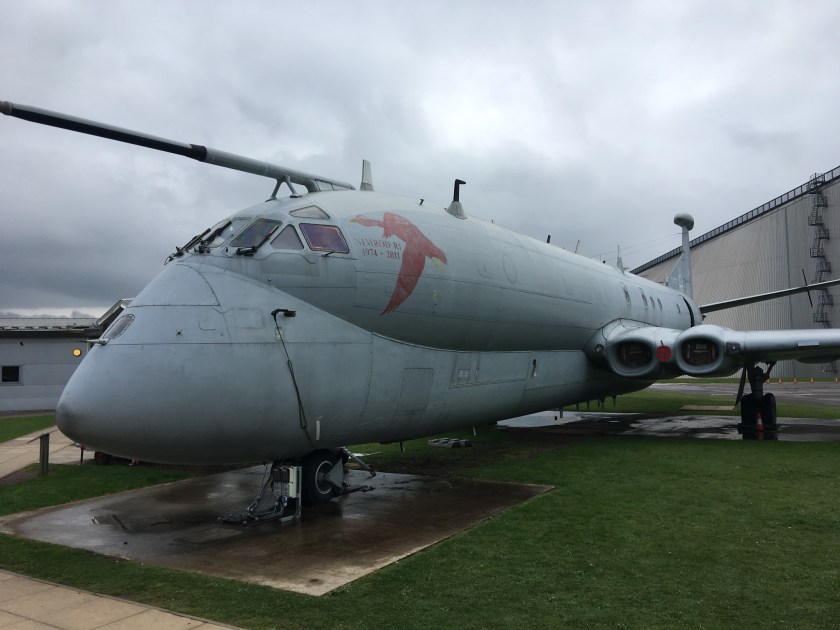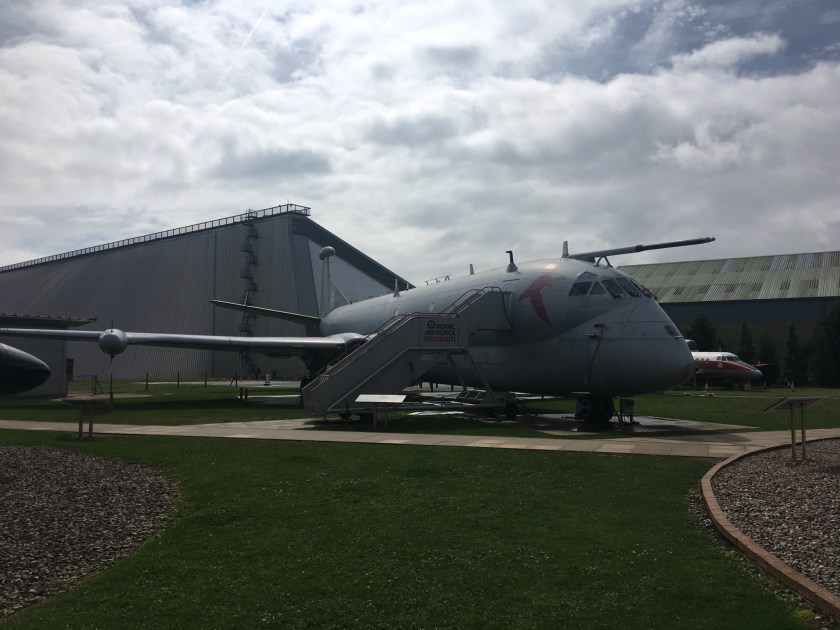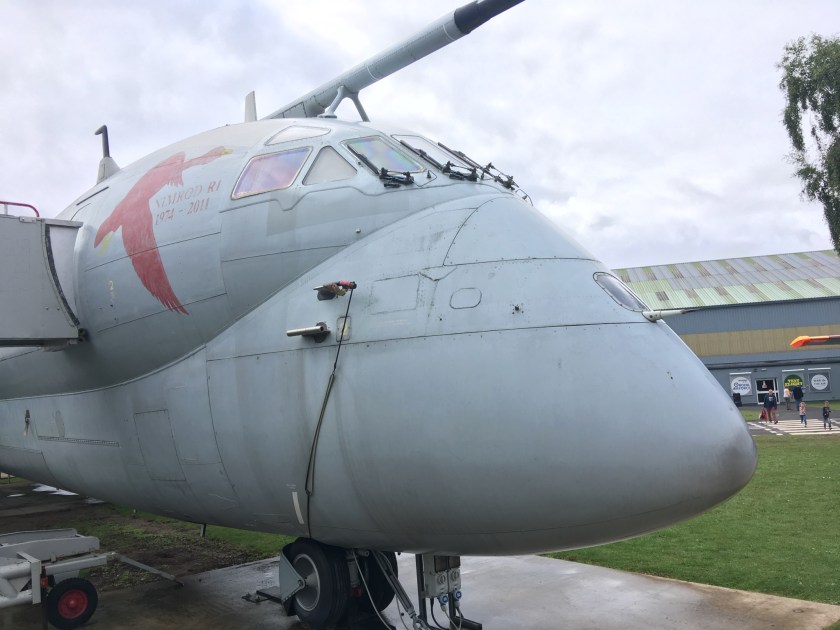
The Nimrod maritime reconnaissance aircraft was derived from the Comet airliner. It originally entered RAF service in 1969 in MR.1 variant to replace the Avro Shackleton. From 1979 35 aircraft were upgraded to the improved MR.2 standard. Nimrod continued in service until 2010 when its successor, the MRA4 was cancelled. The aircraft was modified to carry wing mounted Sidewinder air-air missiles for self -defence during the Falklands conflict in 1982 were known as the RAF’s biggest fighter! Less successful was the airborne early warning version, Nimrod AEW3 which was test flown but did not enter service.
The three Nimrod R.1 electronic-intelligence gathering aircraft entered service in 1971. They carried up to 29 crew and were involved in all major conflicts in the latter part of the 20th and early 21st centuries. When one of the original aircraft was lost following an accident in 1997, XV249 selected as a replacement and, after conversion, flew with No 51 Squadron from RAF Waddington. It took part in operation Ellamy over Libya in 2011 thus remaining operational until its withdrawal from squadron service on 28 June 2011.
It arrived at RAF Cosford in 2012.

The Hawker Siddeley Nimrod was a maritime patrol aircraft developed and operated by the United Kingdom. It was an extensive modification of the de Havilland Comet, the world’s first operational jet airliner. It was originally designed by de Havilland’s successor firm, Hawker Siddeley; further development and maintenance work was undertaken by Hawker Siddeley’s own successor companies, British Aerospace and BAE Systems, respectively.

Three Nimrod aircraft were adapted for the signals intelligence role, replacing the Comet C2s and Canberras of No. 51 Squadron in May 1974.

It was fitted with an array of rotating dish aerials in the aircraft’s bomb bay, with further dish aerials in the tailcone and at the front of the wing-mounted fuel tanks. It had a flight crew of four (two pilots, a flight engineer and one navigator) and up to 25 crew operating the SIGINT equipment.



































